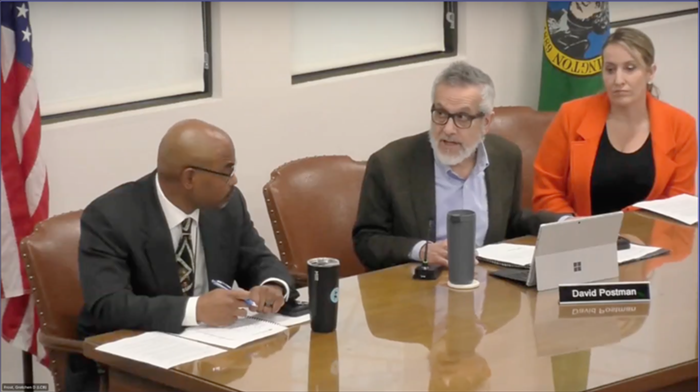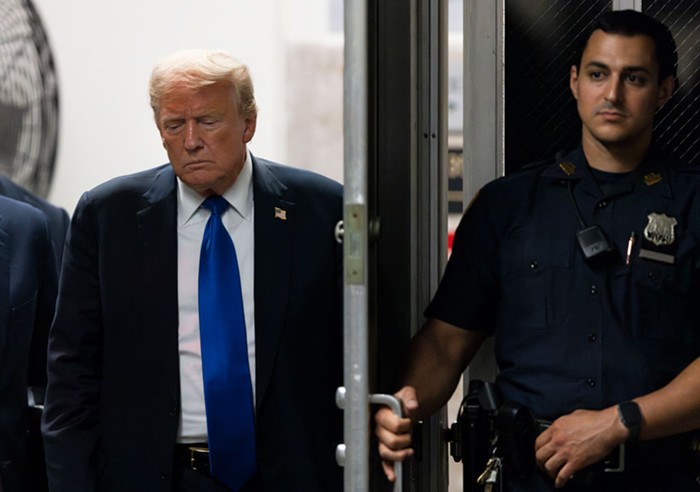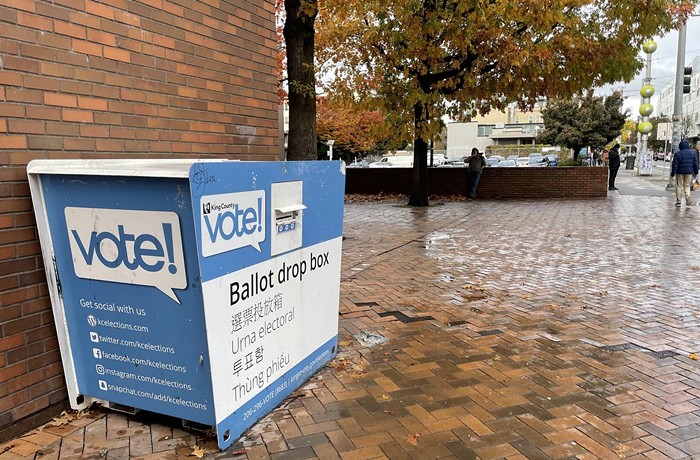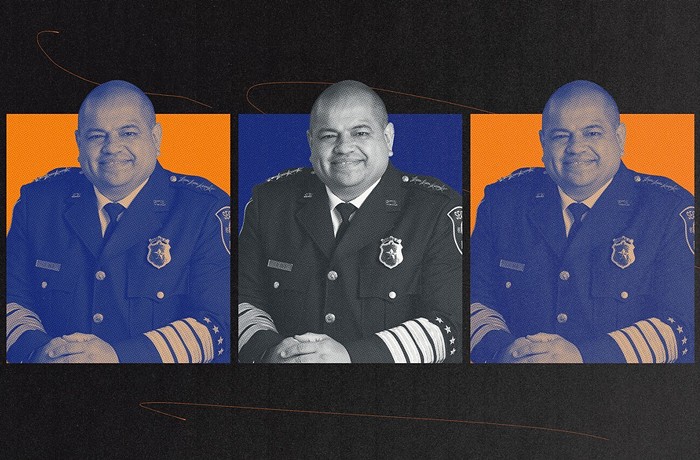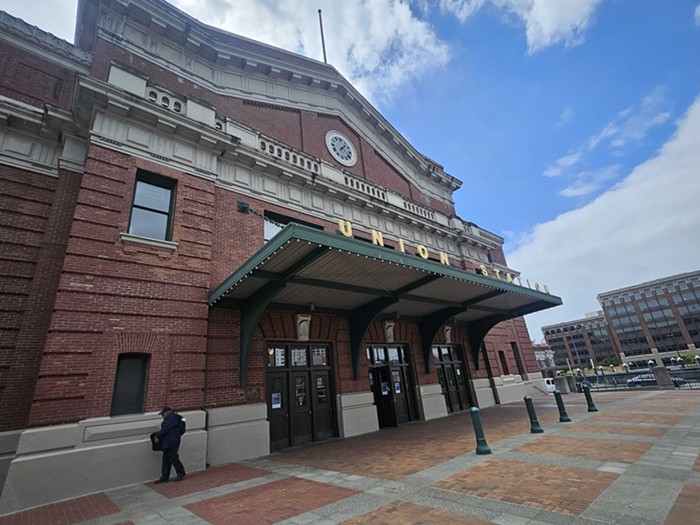
Of the ten most common complaints filed with the Seattle Office of Police Accountability in the last four days, one of the most common is the public's objection to Seattle Police Department officers covering up their badge numbers.
There is "police department policy that speaks specifically to this tradition of mourning bands, and specifies where and how they are placed on a badge," Lisa Herbold tells The Stranger. "I think it's important that we allow the department to continue to have this tradition, but it cannot be used in such a way that it obstructs the public's right to know the badge numbers."
Herbold is the chair of the public safety committee of the city council. In an interview with The Stranger, she discussed what former city council member Peter Steinbrueck did following the WTO protests in 1999 to ensure that officers' names are clearly visible on uniforms.
Steinbrueck got this ordinance passed by the city council in 2000. It says:
Every Seattle Police Department peace officer shall, when wearing a Seattle Police Department uniform, also wear a Seattle Police Department authorized and issued name tag or similar identification device bearing that officer's first initial and last name in legible block print of at least 24-point typeface. This requirement shall apply whether or not such officer is on duty.
And also:
No Seattle Police Department peace officer... shall alter or obscure such name tag or device.
But it doesn't say anything about badge numbers. "The legislation that was passed... does not create a violation for covering badge numbers," Herbold says.
And that's what she wants to change.
"The idea of making sure names aren't obscured is great and relevant to that particular time," she says, "but I think members of the public now are focusing on not only names of officers but badge numbers. The fact that the mourning bans are placed right over the badge numbers is simply not acceptable."
Steinbrueck, reached for comment down at the Port of Seattle, where he is now a commissioner, remembers well the "aftermath of the WTO protest and the mayhem that ensued" there.
"It was a bit shocking to see some of the conduct that occurred there," Steinbrueck says. "I'll never forget what happened on Capitol Hill when protesters were surrounded and corralled and then lavishly sprayed with tear gas, and they had no way to disperse. In order words, they were told to disperse and then they were cut off from dispersal."
He also recalled "a woman in her car and she had a child with her in the car, and an officer sprayed her in the car. I'm sure it's still in the records. The woman was sprayed in the face, within a few feet. I was just shocked."
The year was 1999. At the time, Steinbrueck remembers, it was hard to deal with individual cases of excessive use of force because many officers's names were concealed or not displayed prominently enough on uniforms. So Steinbrueck assembled a group of lawyer friends to think hard about "what meaningful reforms were called for and what we could do to rectify the situation with regard to the anonymity that was ubiquitous and their riot gear."
He remembers thinking the SPD at the WTO protests was "ill-prepared and poorly trained, and took to these kinds of excessive tactics" because they hadn't really had to do any crowd control since the protests of the 1970s. "And it was very painful emotionally and physically for many people."
Asked to reflect on this issue today, about the mourning bands covering up badge numbers during the demonstrations following George Floyd's death, Steinbrueck says, "I was surprised even to hear that—that they would do that [cover their badge numbers] during this occasion, during the aftermath of George Floyd's murder. It seemed like a strange thing to be doing."
He elaborates, "I understand they have been concealing their numbers behind black tape because they're mourning something or someone. Maybe the recent death of a state trooper. I don't know. But I think it's a little bizarre to see that occurring during the current situation. Usually it's in the context of a fallen officer and not something that lasts multiple days."
He adds, "This doesn't seem like the appropriate time to be mourning an officer" who's died in the line of duty. "If they said publicly they were mourning the death of George Floyd, that would be newsworthy and an important story, but I don't think that's the case."
Herbold told The Stranger that over the weekend, Councilmember Teresa Mosqueda "compiled links to social media evidence of six of the most egregious things" seen in the streets the last few days, and sent that compilation to police chief Carmen Best and "asked for the chief to identify who those officers were." One of those videos was the one of the kid apparently recovering from having been pepper sprayed, which prompted activists to accuse the wrong officer of doing it, according to the OPA. The wrong officer was among those who had his badge number covered by a mourning band.
No word yet on whether anyone else on the city council supports Herbold's proposal to require SPD badge numbers not to be covered up.

